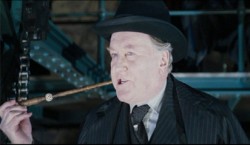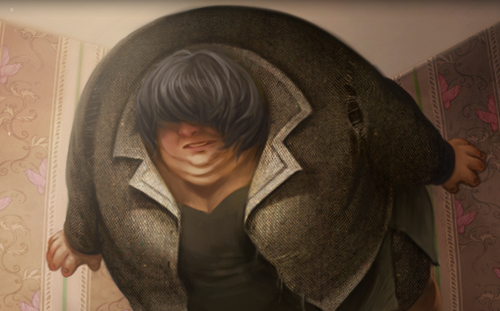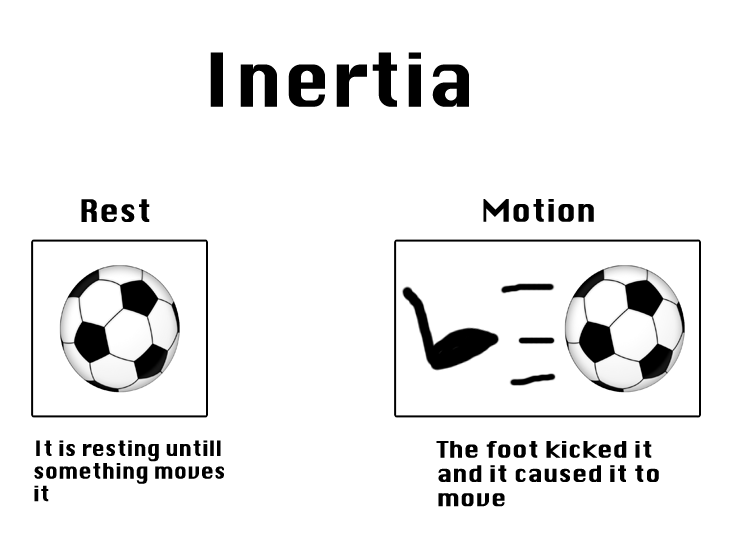Announcements
Welcome to Charms 401!
Please read the following FAQs before joining the class:
When will my assignment be graded?
Charms receives a high volume of assignments submitted each day, and our team is composed entirely of volunteers with real-world obligations. We will not prioritize your assignment over anyone elses. I ask that you be understanding and patient.
If you look in your gradebook, you will be able to see where your assignment is in the grading queue. If you notice that your assignment has not moved at all in the queue after a week, then you may message Professor Laurel to look into the issue.
What do I do if I have a question about an assignment?
Please feel free to reach out to any of our PAs with your questions! Just remember: 1. PAs will never give you the answer to a question. They are here to assist you in completing your work; not to do your work for you. 2. If you have any questions or need help, it is always best to ask before you submit your assignment! Keep in mind: Blank answers are an automatic zero; it is better to always try your best!
If you have a question about an assignment that has already been submitted, please send a private owl directly to Professor Laurel along with your Grade ID for the assignment (this can be found in your gradebook).
If you have any other questions or comments, please do not hesitate to reach out to Professor Laurel!
Lesson 2) Inverse Charms
Last week we opened with a discussion of counter-charms and learned about negation charms, the first of Heap’s Five Categories, which are spells that exist solely to cancel other spells. This week we will examine her second category, inverse charms. You will also learn a bit about magical inertia when it comes to charm-casting, a concept you may have encountered in other situations and classes. Note that today’s class will be very heavy in magical theory.
Capitalization of Terms
I have no doubt that some students would find these lessons easier to understand and parse through if all the new terms (e.g. counter-charm, negation charm, magical inertia) were capitalized. However, it is my belief that these terms have become commonplace in our magical society and are not otherwise proper nouns, and therefore require no capitalization. That said, it is also accepted practice by some in the field to capitalize such terms (typically the same individuals who insist on calling negation charms “canceling charms”), so you will not be penalized for doing so in your own work. If a term is regularly capitalized in the lesson (e.g. Heap’s Five Categories) it should be capitalized in your own work.
Inverse Charms
The most straightforward of Heap’s Five Categories, inverse charms are charms with opposite effects that completely undo one another. Unlike negation charms, there are no charms that can be described as inherently inverse charms, since the category of inverse charm applies only to pairs of charms and not to individual charms. To understand why this is, let’s break the concept of inverse charms down a little further. Inverse charms, according to the definition above, have the following properties:
- The two charms in question can each be used independently of one another.
- Their effects directly oppose one another.
- If the two charms are cast on the same object with the correct mental spellcasting components (usually willpower), the object will revert back to its original state regardless of which was cast first or whether they were cast at the same time.
If the first criterion is not met, you have a negation charm (which cannot be used independently of the original charm). If the second is not met, you have counter-effective charms (whose effects do not directly oppose each other, but instead counter one another circumstantially). If the third is not met and they only partially undo each other, you’re left with a partial inverse charm (if the charms have opposite effects) or a counter-effective charm (if they do not have opposite effects. Remember that counter-effective charms can undo another charm partially, not just completely). Any given spell should only have one full inverse charm; if it appears to have two, either two of them are the same spell or at least one pair is a partial-inverse.
Consider, for example, the Warming Charm and Chilling Charm that you learned about last year. Can the charms be used independently? Yes, they can -- you can warm an object without cooling it first and vice versa. Do they have opposite effects? Yes, one increases the temperature of an object and one decreases it. The spells pass the first two tests, so now we will check for instances where these spells cannot undo or prevent one another. To do this, we turn our attention to magical theory. Although this won't show up on any mandatory assignments, you should still pay close attention.
Are there any cases where, after either spell is cast, the other could not undo it? Well, let’s consider an object with a temperature approaching absolute zero (the coldest possible temperature, around -273°C/-460°F). If a Warming Charm is cast on it with moderate willpower and moderate concentration (the minimum values to cast the spell), it will get warmer. If a Chilling Charm is cast on it, is there any way to return the object to its original temperature? The answer is that it is theoretically possible, even if it practically is not due to human limitations.
You learned in previous lessons that the Chilling Charm could never be “cold enough to be dangerous,” but the reason that is the case is because the spell requires concentration and willpower to create its cold effect. The colder the thoughts you concentrate on and the more willpower you use, the colder the spell will be. However, there is a limit to that cold: your mind cannot conjure up a feeling of cold below a certain temperature since you have never felt nor could you ever feel it (your nerves would cease functioning at that point). Were you to actually concentrate on a temperature approaching absolute zero and be able to muster near-infinite willpower, you could theoretically return an object to that temperature via the Chilling Charm.
You do not actually have to cast the spells, of course — determining the theoretical outcome through reasoning alone is sufficient. There are magical devices that can simulate charms in extreme conditions where human spellcasting limitations would otherwise apply, but a theoretical discussion will have to suffice for the purposes of this class.
Finally, remember that in order for two charms to be inverses, they must never fail to undo one another. There could be some cases we haven’t yet thought of where the spells fail to undo each other. If that happens, the spells are reclassified as partial-inverses rather than inverses. Perhaps you will be able to think of a unique case that eliminates two charms as inverses.
The following spells are all charms and their inverses (as well as one inverse to a charm you’ve already learned).
Amplifying Charm
Incantation: Sonorus (soh-NOHR-us)
Wand Movement: Point wand toward target.
Willpower: Moderate; determines volume of resulting sound.
Concentration: Low; on booming voices or loud sounds. Target the thing whose sound will be amplified.
Category: Static.
The Amplifying Charm is used to make the sound coming from its target louder. Proximity to the target will make the spell far easier to cast and lower the willpower and concentration threshold required; many wizards and witches who use the spell to give speeches will choose to place their wands right up against their necks, since almost no concentration is required when the wand is touching its target, thus allowing them to concentrate on their speech instead of the spell.

This spell is often used when speaking to large crowds on a stage or in a stadium, such as in the above image from the 1994 Quidditch World Cup, or to increase the volume of a particularly quiet device (like a radio).
Quietening Charm
Incantation: Quietus (KWIY-uh-tus)
Wand Movement: Point wand toward target.
Willpower: Moderate; determines volume of resulting sound (more willpower results in quieter sound).
Concentration: Low; on quiet sounds or silence. Target the thing whose sound is to be quieted.
Category: Static.
The Quietening Charm is used to make the sound coming from its target quieter. It is typically used to undo the Amplifying Charm, since sounds that one doesn’t want to hear can be silenced entirely with a different charm you’ll learn next year — moreover, this charm cannot actually silence a sound, only make it very, very quiet! It has grown more common in recent years among younger wizards who wish to listen to certain genres of music they wouldn’t want their parents overhearing (not that any of you should do this!) and stage performers trying to remain quiet backstage.
Engorgement Charm
Incantation: Engorgio (en-GOR-gee-oh)
Wand Movement: Downward flick followed by a clockwise circle.
Willpower: Moderate; determines size of resulting object.
Concentration: Moderate; Target to be enlarged.
Category: Static.

The Engorgement Charm is used to make an object larger. An icy blue light will issue from your wand and the target will grow. It can be used safely on plants and animals, though you should be careful when casting it on the latter as they may cause damage or injury if they rampage. Moreover, if you put too much willpower into it, the target may explode (and hence it is even more so not recommended to practice this on animals). It is important to learn the Shrinking Charm at the same time you learn the Engorgement Charm (and possibly even before it) in case you enlarge something over-zealously. One of the most famous uses of this charm was the accidental casting by young Harry Potter, when he inflated his Aunt Marge.
Shrinking Charm
Incantation: Reducio (ruh-DOO-see-oh)
Wand Movement: V shape down and back up.
Willpower: Moderate; determines size of object (more willpower yields a smaller object).
Concentration: Moderate; Target to be shrunk.
Category: Static.
When this spell is cast correctly, a purple light will issue from your wand and your target will shrink. The Shrinking Charm is typically used to undo the Engorgement Charm, though it can also be important to those trying to sneakily possess illegal items or store items temporarily. This spell has an interesting history, as its first known use was by a fan of the Portuguese National Quidditch Team in a match against their Spanish rivals. When the Spanish seeker was just inches away from catching the snitch, the Portuguese fan cast this charm on the seeker’s broom causing him to lose his balance and fall.
Weight Induction Charm
Incantation: Gravato (gra-VAH-toh)
Wand Movement: Arc upward and back down from left to right.
Willpower: High; determines length of time target will be heavier and weight of target.
Concentration: High; Target whose weight is to be increased.
Category: Static.
The Weight Induction Charm makes its target, and any contents it contains (e.g. a trunk and everything inside it), heavier. Note that it won’t increase the size or volume of the target, only the density (so there will be no visible change). It can be made to last longer with more focus and willpower, though is often used to simply undo the Weight Reduction Charm.
Other Inverse Charms
You have already learned some other inverses over your years here. The Warming Charm and Chilling Charm you learned about in Year One have already been mentioned. You also learned the Softening Charm and the Hardening Charm in Year Two. The Weight Reduction Charm (whose inverse you learned today) was also covered in Year Two.
Magical Inertia

Have you ever heard the phrase ‘An object at rest tends to stay at rest unless acted upon by an outside force’ in reference to a physics term known as inertia? Magic follows similar rules. Magic is a force similar to all others, though far more sophisticated and with more manifestations, and is thus subject to this same restriction. Different objects have different amounts of magical inertia when faced with a particular spell.The more inertia an object has to a particular kind of charm, the more willpower is required to charm it. The same object can have less magical inertia to one spell and far more to another.
Moreover, once a charm ends, the object will remain the way the magic left it until acted upon by an outside force. This typically happens very quickly with temporary charms -- an object being levitated will fall due to gravity, for example -- and thus we don’t usually think about the forces needed to restore the object to it’s original state. This inertia -- an object’s tendency to remain unchanged -- is also why some magical changes are essentially permanent. A door unlocked with the Unlocking Charm will not re-lock itself after the charm is cast, since there is no force (magical or otherwise) driving it to do so.
Magical inertia holds additional implications for inverse charms. When inverse charms are cast at the same time on the same object and with the requisite willpower and concentration, the object will remain unchanged and unmoved (or more correctly, exactly as it was before the magic was cast). This isn’t necessarily true of partial-inverse charms, since one spell or the other may have a greater impact, but it should hold true for all regular inverse charms. Each spell undoes the other, leaving the object as it was.
Assignments
Your work for today is a worksheet on the lesson. There will be no other assignments since this was such a long lesson. Good luck!
Image Credit: HP Wiki, TheDevinGreat
- CHRM-301
Enroll


